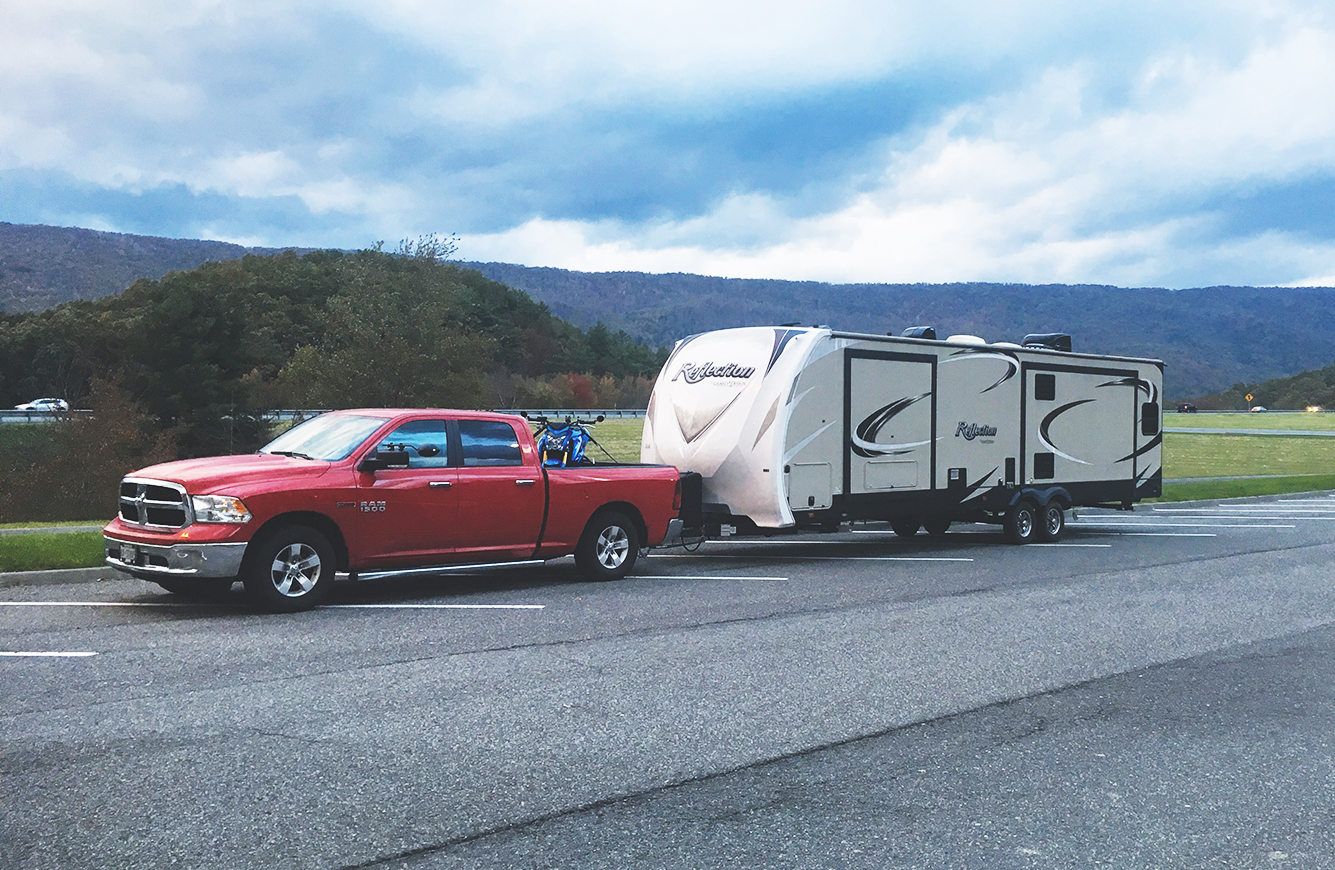A properly adjusted equalizing hitch makes towing a breeze!
By Andy Thomson
A properly connected equalizing hitch is a simple but amazingly effective piece of equipment. It transfers about 50% of the trailer’s hitch weight to the front wheels of the tow vehicle. The effect of transferring this weight creates an improvement in stability, ride comfort and safety that are hard to over emphasize. Every full size trailer should be connected with one but even some smaller trailers like hardtops tow much better with an equalizing hitch.
Hitches have a terminology all their own – here are some of the key components.
- The “receiver or platform” is the only portion that is permanently attached to the tow vehicle. It has to be strong enough to transmit the torque created by the equalizing hitch.
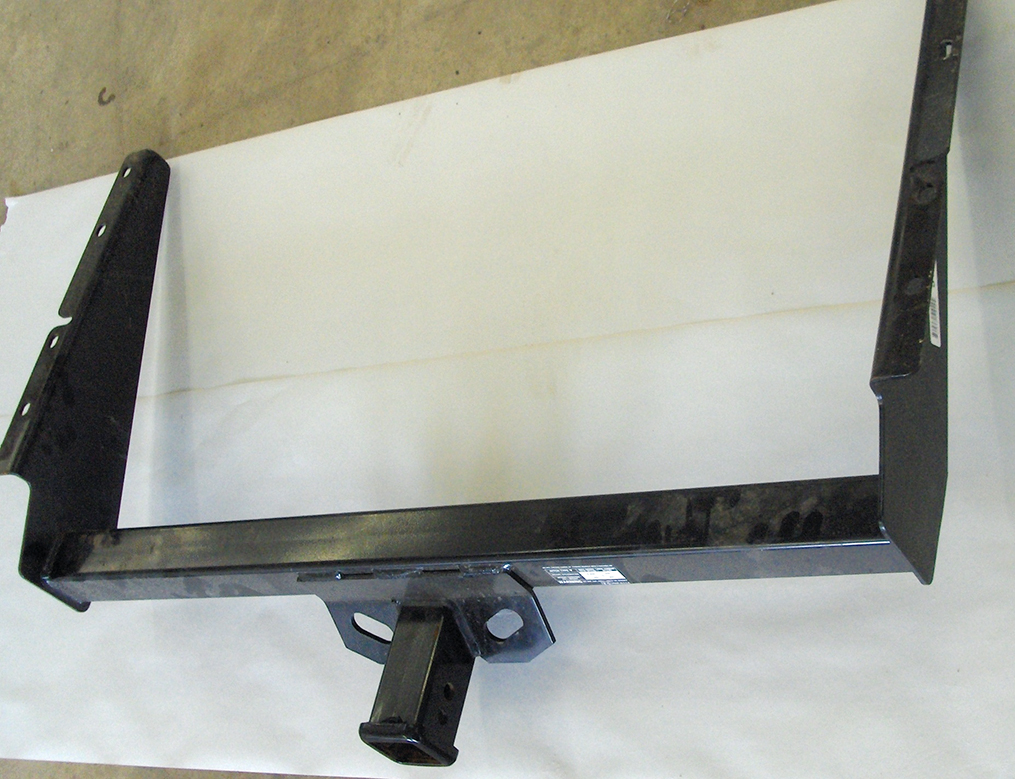
- Next you need a section of 2” solid steel to slide into the receiver this portion can be a simple section of straight 2xs steel bar for welded hitches or an “L” Shaped assembly with a series of holes for bolt together hitches. This portion is called the “Shank”.
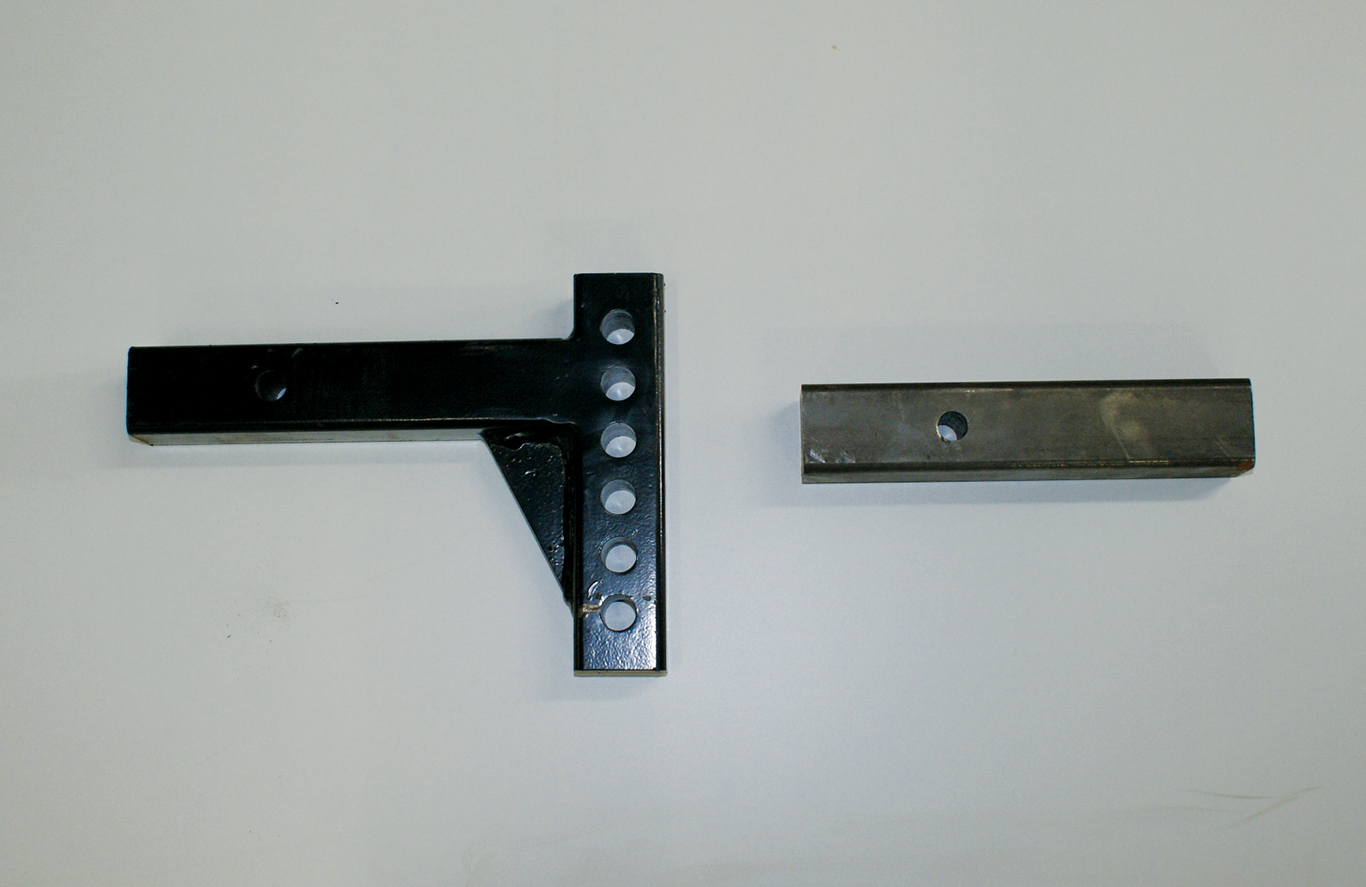
- Attached to the shank is the “Ball Mount” This can be welded or bolted to the shank depending on the design. This is where most hitch installations go wrong the height and angle of the ball mount are critical to maximize handling stability.
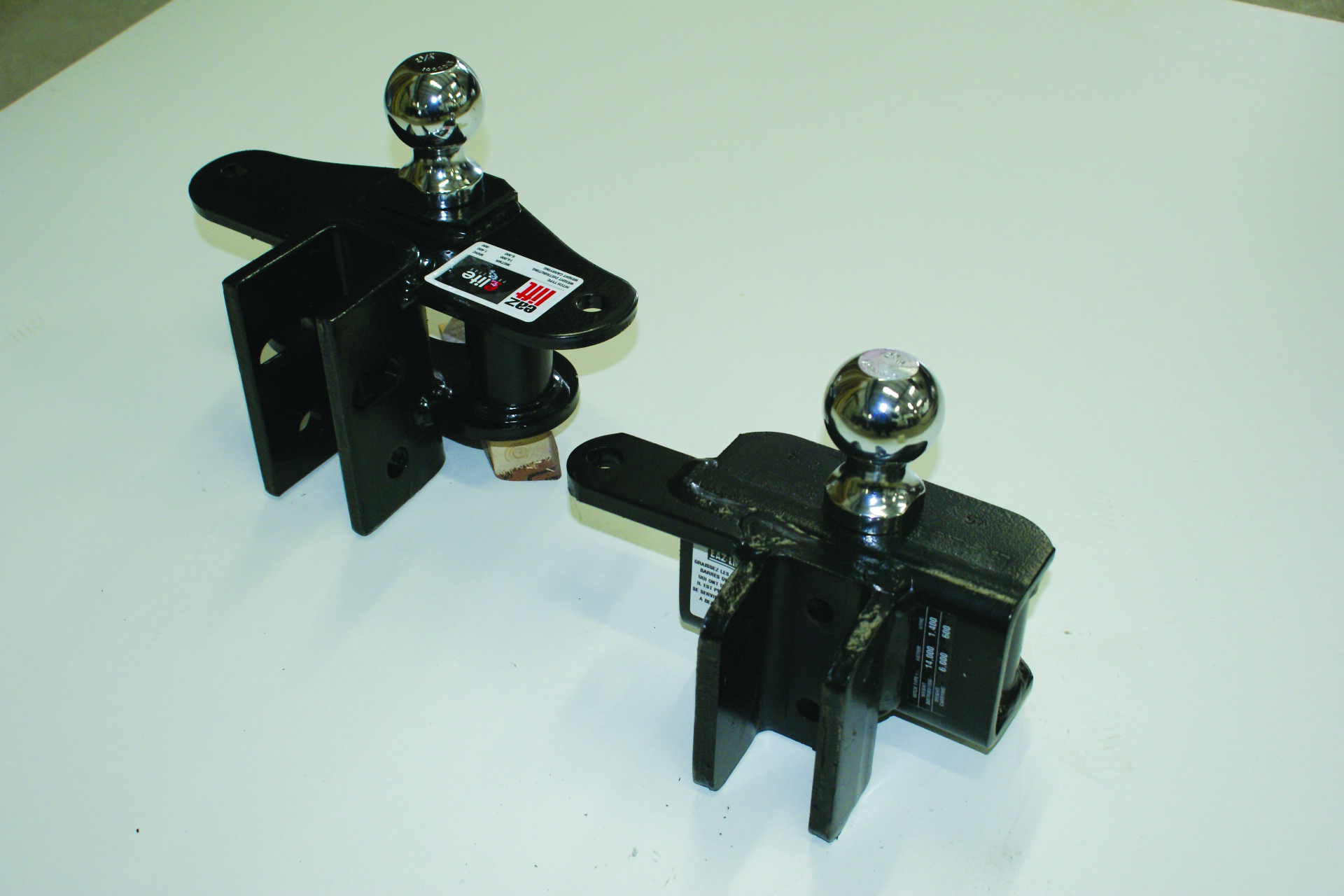
- The “Torsion or Spring Bars” are the portions of the hitch that do the work of distributing the weight forward. They need to be firm enough to transfer the weight yet still have enough movement to allow the combination to drive through dips up ramps etc.
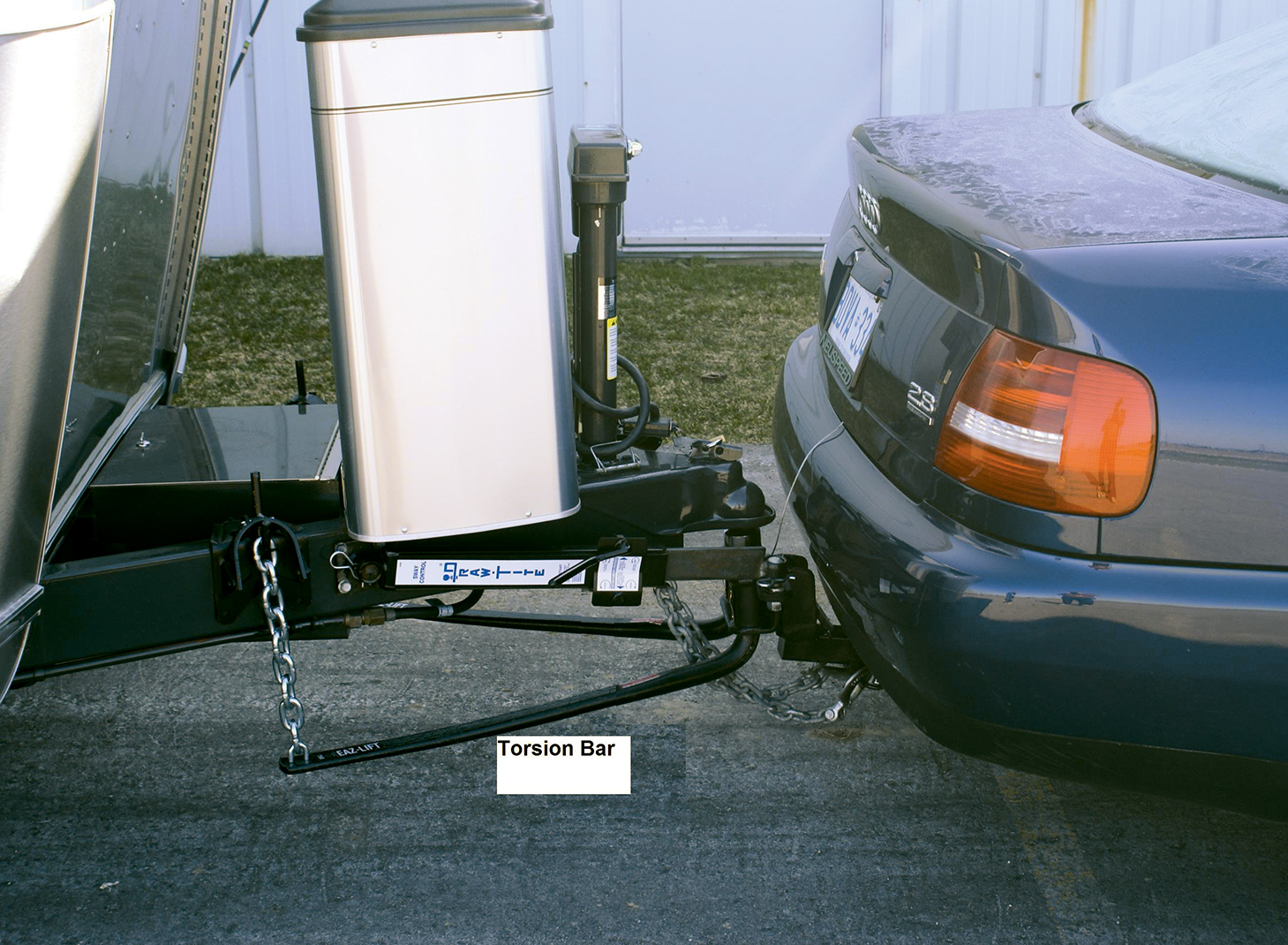
Here you can see the torsion bars have some arc while still transmitting weight properly to the front wheels. Other important elements that make this set up work very well are that the ball is close to the back of the car, there is good rearward angle on the ball mount and the height is set properly so that the trailer sits level when the car is level.
Also shown in this picture is a “Friction Sway Control”. This is not nearly as important as the weight distribution portion of the hitch and it is not a substitute for weight distribution. Still they are not expensive and well worth having on most combinations. Generally you add 2 if the trailer is over 25’ long. Inside the control are brake linings that squeeze on the bar as the combination turns.
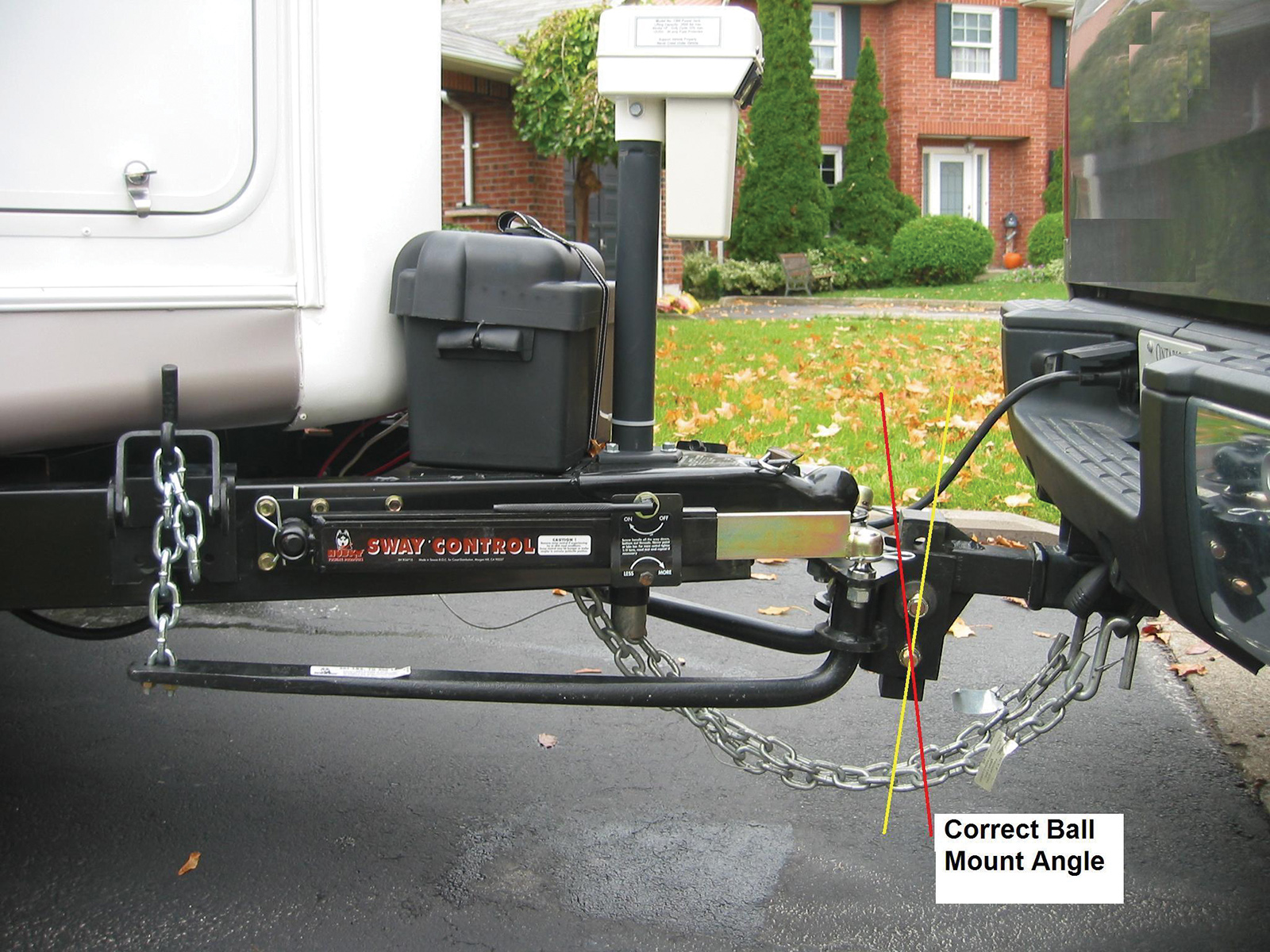 Just for some contrast here is a hitch that is not set up properly.
Just for some contrast here is a hitch that is not set up properly.
- First of all the hitch receiver is not strong enough you can see here how it has been bent upwards at the back of the receiver tube.
- The ball is much further from the bumper than necessary which makes it harder to transfer weight, puts additional strain on the receiver and gives the trailer more leverage over the tow vehicle side to side.
- In this case the Ball Mount and Shank were originally bolted together square instead of with a rearward angle. Now with the bending of the receiver the angle is now forward (Yellow Line) which is opposite the rearward tilt it should have (Red Line).
- Most people have most of their hardware for their equalizing hitch system but very few are properly connected. For the little additional effort it takes to set it up right the trade off in driving ease and safety are well worth while.
Andy
For more information on ball mount angles, please see this article:
For the best tutorial on setting upo a weight distributing hitch, please see this article:


















